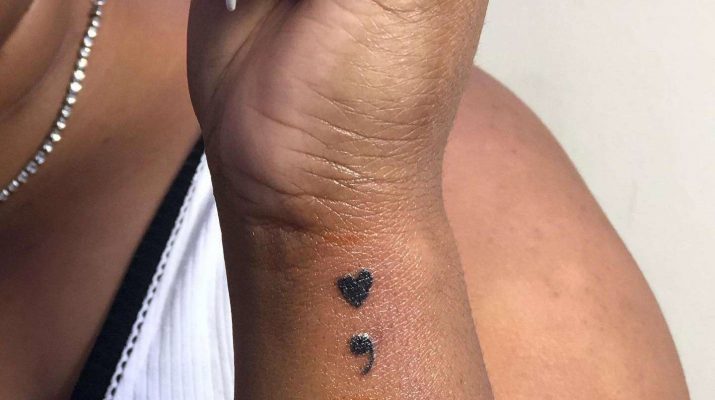By Debra Rono
September 10th each year marks the World Suicide Prevention Day, a commemoration that began in 2003. This day serves to foster global commitment and action aimed at preventing suicides.
The theme for this year’s observance is “Changing the Narrative on Suicide,” with a call to action titled “Start the Conversation.” This theme seeks to enhance awareness regarding the necessity of diminishing stigma and promoting open dialogues to avert suicides.
Across the globe, individuals commemorate this day in various ways, with some opting to mark their bodies as a reminder, notably through tattoos of a semicolon (;).
The semicolon tattoo has gained popularity, particularly since 2013, when Amy Bleuel initiated Project Semicolon.
This nonprofit organization is dedicated to raising awareness about depression and advocating for mental health. Bleuel selected the semicolon as the logo of Project Semicolon to symbolize a survivor’s determination to persist in life.
The semicolon tattoo serves as a beacon of hope and resilience. Individuals grappling with anxiety, depression, or other mental health challenges often choose this tattoo to signify their decision to continue their narrative despite the adversities they have faced. It is commonly tattooed under the wrist or on the neck.
Additionally, it is a reminder for those who have survived suicide or self-harm, illustrating their choice to embrace life after contemplating death. It also stands as a symbol of solidarity for individuals who have lost loved ones to suicide or who have themselves survived such experiences.
Essentially, the semicolon can be interpreted as a literal mark that extends a sentence, linking two independent clauses that are closely related in meaning.
In this context, the sentence represents life, the period signifies death, and the semicolon embodies the continuation of life or the possibility of a new beginning.
For instance, one might say: He would have died that day; but he instead chose to live.
As the world observes this day, we are inspired to embrace the semicolon and continue our journey. This occasion also serves as a call to action for our governmental leaders to enhance access to high-quality mental health services and to foster safe and supportive environments.
In Kenya, the Kenya National Commission on Human Rights (KNCHR) is seeking to have Section 226 of the Penal Code declared unconstitutional. The commission has gone to the High Court and is expected to deliver its judgment concerning the case on 21st November 2024.
Section 226 of the Penal Code seeks the criminalization of attempted suicide and KNCHR notes that individuals who attempt to kill themselves have mental illness and they deserve to be taken for medical care instead of being arrested and charged in court of law.

